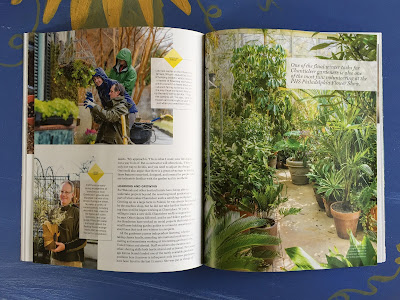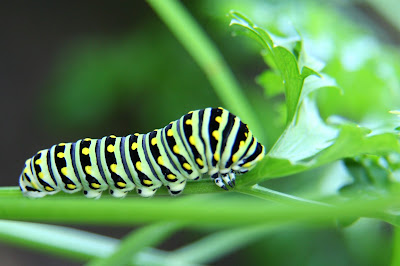I spent 21 years working for a company that designs and manufactures CDs and DVDs for independent musicians and filmmakers. I had moved up the ladder quickly there – was training new hires after only 6 months on the job, then was made an art director a little over a year after starting my job there. I spent 16 years developing the Design Studio, training new hires, establishing best practices, and more. The company restructured about 4-5 years ago, laying off many people and eliminating middle management jobs. My art director job was eliminated and I went back to being a graphic designer. I counted myself lucky to still have a job, but it wasn’t easy watching the Design Studio go from 25 designers to a mere 6, and it was even harder no longer having a say in how the department was being run. I had started to look for a new job then, however, I learned quickly that most companies were looking for graphic designers who also knew web design. So after an unsuccessful job search, I decided to go back to University of the Arts (my alma mater) to get a certificate in web design. I spent three years working on that, got straight As, and graduated in April 2015.
I was still working on updating my design portfolio and website when I started looking at places that interested me – Morris Arboretum, Longwood Gardens, Winterthur, Bartram’s Garden, Pennsylvania Horticultural Society, anything that was garden-related (I also happen to be a member of all of these places, and have been for many years). In August I noticed that Morris Arboretum was looking for volunteer guest bloggers and that seemed like a good start for combining my skills and interests. I sent them some examples of my own blog and they were interested. I started out writing about some topics that they provided, although now they let me come up with my own topics. I have loved writing articles for them and they seem pleased with my work, so it has been a mutually beneficial situation. Plus, it gives me an excuse to visit the arboretum more often! It is beautiful, especially spring through fall. I briefly entertained a part time graphic design there, however I decided that I really needed a full time job with benefits. That’s when I spotted the graphic design position at Pennsylvania Horticultural Society. They were also looking for someone with web design skills. I applied, and about a week later went for an interview, then a second interview, then a phone interview, then got a job offer. Once it happened, it happened fast, and before I knew it, I had a new job!
The commute into Philadelphia via public transportation, then 15-20 minute walk from there, has been a change to the 5-10 minute drive I was used to, but I knew I was at the right place when the Director of Marketing gave me flowers on my first day. She said, “Every new hire at PHS should have flowers on their desk.”
What is the Pennsylvania Horticultural Society (PHS) all about, you ask? Most people think of the annual Philadelphia Flower Show when they think of PHS. Or you may know of the flower show, but don’t realize that PHS is the non-profit organization behind it and that the proceeds go to funding their various community greening and gardening programs. I have been going to the flower show every year since I graduated college and I have been a PHS member just as long.
Quick Stats about the Pennsylvania Horticultural Society and their programs:
(Taken from their website and printed materials)PHS
• The mission: PHS connect people to horticulture and together we create beautiful, healthy and sustainable communities
• has 64,000 members and 5,000 volunteers annually
• has an operating budget of $23.8 million for FY 2015
PHS Philadelphia Flower Show
• attracts approximately 250,000 visitors annually
• started in 1829 and is the nation’s largest and longest-running horticultural event
• has been honored as the best event in the world by the International Festivals & Events Association, competing with events such as the Kentucky Derby Festival, Tournament of Roses Parade, and other international celebrations.
Plant One Million
• has planted 500,000 trees as part of the P1M Regional Partnership since 2011, in an effort to restore the tree canopy in the Greater Philadelphia region
• the 500,000 tree (the halfway mark) was planted in honor of the visit of Pope Francis.
Tree Tenders
• has graduated 4,278 people since 1993, teaching them horticultural skills and about tree care maintenance
• has planted over 2,000 trees throughout the Philadelphia region in 2014
The Rain Check Program
• has worked with Philadelphia residents to control excess storm water by providing workshops and tools, such as rain barrels, downspout planters, depaving, permeable pavers and rain gardens
• has installed 237 rain barrels since September 2014, under contract by Philadelphia Water Department
Garden Programs
• have graduated 2,075 people as Garden Tenders since 1995, providing them with hands-on gardening experience and teaching them how to establish successful, self-sustaining community gardens
• have graduated 628 people as Green City Teachers since 2006, helping them to bring school garden projects to life
• have preserved 35 gardens through the Neighborhood Gardens Trust, a land trust dedicated to the preservation of community gardens and shared open spaces to enhance the quality of life in Philadelphia’s neighborhoods
City Harvest
• makes fresh, nutritions produce more widely available to underserved neighborhoods
• has 140 growing sites in its network of urban gardens and farms
• distributed 250,000 seedlings in 2014
• helps over 1,200 families get fresh produce every week during the growing season
Roots to Re-Entry
• Since 2010, the recidivism rate for R2R graduates has been 30 percent, as compared to the average rate of 65 percent for the entire population of Philadelphia ex-offenders
• has offered workforce readiness and horticultural programming to 850 inmates
• has broken previous year’s records by growing 12,000 pounds of produce in 2015, which was donated to a food cupboard in the city
Philadelphia LandCare
• collaborates with the city of Philadelphia to clean, green and stabilize vacant lots to help return them to productive use
• maintains 6,000 vacant parcels throughout the city
• maintains 2,100 additional parcels through Community LandCare
Civic Landscapes and Landscape Management
• Civic Landscapes has reinvented seven public landscapes so that they can be enjoyed by all, including South, Central, and North Broad Street, the Northeast Corridor, Girard Avenue, and the Airport.
• Landscape Management manages more than 50 acres, including the Philadelphia Museum of Art, Azalea Garden, Logan Square Swann Memorial Fountain, and Rodin Museum.
Pop Up Gardens
• has turned a vacant lot into an urban oasis for the past 5 years, providing food, drinks, workshops, and entertainment
• has welcomed more than 75,000 guests at its two Pop Up Gardens in 2015
Education
• PHS hosts lectures and workshops at the PHS McLean Library, the Philadelphia Flower Show, and in collaboration with partners in the city
• The PHS McLean Library is the nation’s oldest horticultural library with 18,000 titles on gardening, plant care, botany, landscape architecture and urban greening, as well as 5,000 e-books
That is just a brief overview of the many worthwhile programs that PHS manages. Can you see why I wanted to work for this amazing non-profit? Their mission and goals are right up my alley and I feel great being even just a small part of this wonderful organization.
During my first month at PHS, new hires were treated to a tour of some of the PHS managed gardens and green spaces. It was great to see these first-hand.
One of the stops on the tour was the community garden at Bartram’s Garden. In this mild November, there was still some crops growing, such as broccoli and cauliflower.
Another stop on the tour was the Big Green Block, where PHS partnered with the Philadelphia Water Department and others to create stormwater management, as well as green space and a dog park for residents. This site includes tree trenches and rain gardens to help manage stormwater runoff.
PHS is funded mainly through membership. One of the perks of being a member is a free subscription to their beautifully designed GROW magazine. GROW features articles on gardening, with a focus on the Pennsylvania area.
It has been odd starting a new job after many years of working for the same company, but the mission and people at PHS has made for a smooth transition. I feel great about the organization I work for and its goals and accomplishments. I look forward to being a part of it all in the coming years, even in my small way as a graphic designer.
P.S. I am still guest-blogging for the Morris Arboretum blog when I can. (Some of my posts are also on their older blog website.) Some people have been confused and think that this is related to my job at PHS, but it is not. I love Morris Arboretum, have been a long-time member, and I do the guest-blogging on a volunteer basis. I really enjoy my partnership with them and I will continue to help them as long as I can and as long as they are willing to have me.























































